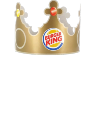Olivia Dunne is a gymnast on Louisiana State’s women’s team.
She was an all-American in her freshman year and made the Southeastern Conference’s honor roll as a sophomore majoring in interdisciplinary studies.
Ahead of the start of her junior season, Dunne is also at the leading edge of a movement shaking the old foundations of college sports: a female student athlete raking in cash thanks to the passage in 2021 of new rules allowing college athletes to sign name, image and likeness, or N.I.L., deals.
Dunne, 20, won’t give specifics on her earnings, which at least one industry analyst projects will top $2 million over the next year.
“Seven figures,” she said. “That is something I’m proud of. Especially since I’m a woman in college sports.” She added: “There are no professional leagues for most women’s sports after college.”
Dunne, a petite blonde with a bright smile and a gymnast’s toned physique, earns a staggering amount by posting to her eight-million strong internet following on Instagram and TikTok, platforms on which she intersperses sponsored content modeling American Eagle Outfitters jeans and Vuori activewear alongside videos of her lip syncing popular songs or performing trending dances.
To Dunne, and many other athletes of her generation, being candid and flirty and showing off their bodies in ways that emphasize traditional notions of female beauty on social media are all empowering.
“It’s just about showing as much or as little as you want,” Dunne said of her online persona.
The athlete compensation and endorsement rules have been a game-changer for collegiate women, particularly those who compete in what are known as nonrevenue sports, such as gymnastics.
Sure, male football players have garnered about half of the overall compensation estimated to be worth at least $500 million, fueled by collectives formed by wealthy supporters who pay male athletes for everything from jersey sales to public appearances.
Women are more than holding their own as earners thanks largely to leveraging their social media popularity. Along with Dunne, other female student athletes have been minted millionaires by the N.I.L. rules, including Haley and Hanna Cavinder, twins who play college basketball at Miami; Sunisa Lee, the Auburn gymnast and Olympic gold medalist at the Tokyo Games; and Paige Bueckers and Azzi Fudd, basketball stars at Connecticut.
But the new flood of money — and the way many female athletes are attaining it — troubles some who have fought for equitable treatment in women’s sports and say that it rewards traditional feminine desirability over athletic excellence. And while the female athletes I spoke to said they were consciously deciding whether to play up or down their sexuality, some observers say that the market is dictating that choice.
Andrea Geurin, a researcher of sports business at Loughborough University in England, studied female athletes trying to make the Rio Olympics in 2016, many of them American collegians. “One of the big themes that came out is the pressure that they felt to post suggestive or sexy photos of themselves” on social media, Geurin said.
She noted that some of the athletes had decided that making public such imagery wasn’t worth it while others had found it was one of the primary ways to increase their online popularity and earning power.
Scroll through the social media posts from female college athletes across the United States and you will find that a significant through line on many of the women’s accounts is the well-trod and well-proven notion that sexiness sells. Posts catering to traditional ideals about what makes women appealing to men do well, and the market backs that up.
Stanford’s Tara VanDerveer, the most successful coach in women’s college basketball, sees the part of the N.I.L. revolution that focuses on beauty as regressive for female athletes. VanDerveer started coaching in 1978, a virtual eon before the popularization of the internet and social media, but she said the technology was upholding old sexist notions.
“I guess sometimes we have this swinging pendulum, where we maybe take two steps forward, and then we take a step back. We’re fighting for all the opportunities to compete, to play, to have resources, to have facilities, to have coaches, and all the things that go with Olympic-caliber athletics.”
“This is a step back,” she added.
Race cannot be ignored as part of the dynamic. A majority of the most successful female moneymakers are white. Sexual orientation can’t be ignored, either. Few of the top earners openly identify as gay, and many post suggestive images of themselves that seem to cater to the male gaze.
Other than the massive internet audiences, none of this is entirely new. The tension among body image, femininity and the drive to be taken seriously as athletes has been part of the deal for female athletes for generations.
We can go back roughly 70 years, as just one example, to the era of the top tennis player “Gorgeous” Gussie Moran, who grew famous as much for her body-hugging outfits and lacy underwear as for her tennis.
In the 1990s, the two-time Olympic gold medal-winning figure skater Katarina Witt was a Playboy cover model, and she’s hardly the only female athlete to show up in risqué photo spreads.
Think of the Sports Illustrated swimsuit edition or ESPN The Magazine’s Body Issue, in which artful photos of nude athletes have hooked a mostly male audience for years. But those depictions also continue to draw female athletes who see such shoots as a chance to promote body positivity, to feel boldly confident about the physiques they’ve honed through hard work, or to challenge norms about femininity.
Female collegiate athletes are certainly taking advantage of multiple ways to present themselves — while always having to be wary of society’s tendency to objectify.
Haley Jones, an All-America guard at Stanford and a candidate for the Player of the Year Award, said she didn’t want to play up s*x appeal. Her endorsement income is driven by a social media image that portrays her as a lighthearted student-athlete without an overtly provocative tone.
Haley Jones, a senior guard on Stanford’s women’s basketball team, steers away from posting revealing photos on her social media.Lauren Segal for The New York Times
“That’s not the top topic type of content that I want to post, and my audience isn’t looking for that for me,” Jones said.Lauren Segal for The New York Times
“I don’t post bikini pictures,” she said in a recent interview. “Not because I don’t want to show my body. It’s because that’s not the top topic type of content that I want to post, and my audience isn’t looking for that for me.”
Welcome to the world of Haley Jones, Inc.
Jones, among the few Black female collegiate athletes considered to be a top endorsement earner, has learned to quickly deconstruct the pros and cons of the new era of commercialization.
She has endorsements with Nike, Beats by Dre, SoFi and Uncle Funky’s Daughter, a hair-care product for women with curly hair, among other companies. Rishi Daulat, her agent, said Jones had made over six figures since the N.I.L. legislation passed but declined to give a specific figure.
Jones was quick to note female athletes can choose not to participate in social media and lose out on the biggest profits. Or they can take part, make money, focus on the supportive fans and hold their breath with a sort of resignation about the swath of online reactions — often leering and sexualized comments on their social media platforms — that show how much they are objectified.
“You can go outside wearing sweatpants and a puffer jacket, and you’ll be sexualized. I could be on a podcast, and it could just be my voice, and I’ll face the same thing. So, I think it will be there, no matter what you do or how you present yourself.”
“This is the society we live in,” Jones added.







Jump in the discussion.
No email address required.
Wow 'few' huh, nice of them to leave off any sort of number so it can be compared to the percentage of openly gay people in general.
Also gays posting pics that cater to the male gaze is just gay culture they arent doing it for the money
Jump in the discussion.
No email address required.
Isn't the male gaze the mostly same as the female gaze if we're talking about lesbians?
Jump in the discussion.
No email address required.
Wrong. 50 percent of women are above average looking, 10 percent of men are.
Jump in the discussion.
No email address required.
More options
Context
Decided to look it up:
https://old.reddit.com/r/actuallesbians/comments/aq2rua/does_the_lesbian_gaze_exist_if_so_what_do_you/?sort=controversial
So in essence, men are uncultured, base swine while lesbians/ transbians aren't objectifying with their gaze, but appreciating the human being for rich inner life and mannerisms.
Jump in the discussion.
No email address required.
More options
Context
More options
Context
I thought the same shit. We’re legitimately reaching the point where they’re wanting gays to have equal representation as the straights.
This would have been parody a decade ago.
Jump in the discussion.
No email address required.
To be fair, the gays are the übermensch so really they should be overrepresented in anything involving talent
Jump in the discussion.
No email address required.
Aren't they already? Or at least for the arts?
Jump in the discussion.
No email address required.
More options
Context
More options
Context
More options
Context
Tbf I would not see an issue if 100% of athletes were straight, gay, or bi. So while this omission neatly serves to demonstrate his brainlet status, I would dismiss this as useless information either way. You'd have to do much more work if you want me to reject the explanation that gays and strags just behave differently for reasons that are benevolent.
Jump in the discussion.
No email address required.
More options
Context
More options
Context